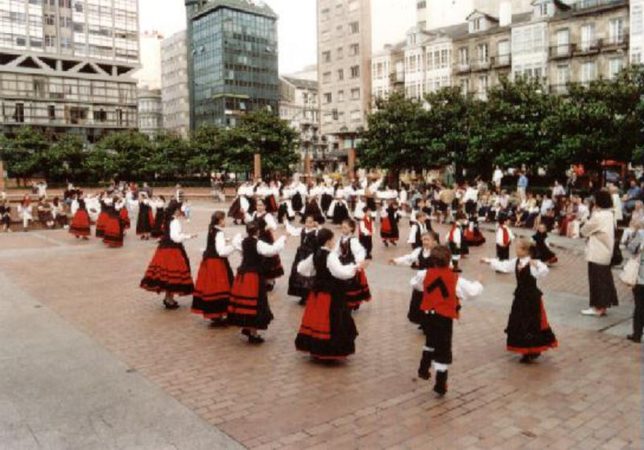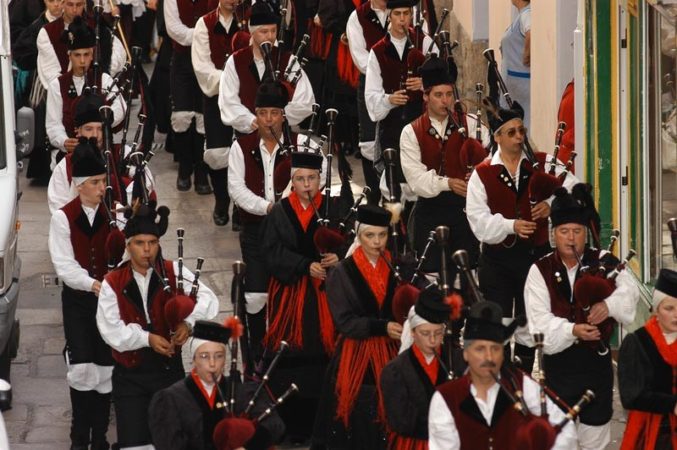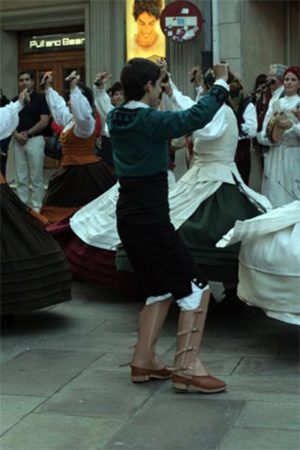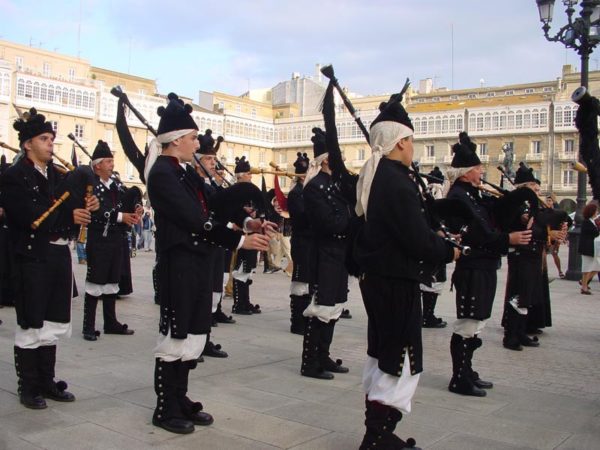REMEMBERING ACTIVITIES OF THE PROGRAM OF HOGUERAS: THE CYCLE "FOLKLORE ON THE STREET"
It was in 1985 when the Promoter Commission had the happy idea of incorporating into its program the Days of Theater, Music and Dance that have reached our days as the most important part of the set of cultural activities scheduled each year by the Entity.
In this Cycle, from its beginnings, all kinds of events related to the three artistic specialties that gave its name were framed. Thus, from theatrical performances to concerts of all kinds, through ballet and dance demonstrations, the Days were programmed and consolidated, year after year, despite the very few budgetary constraints of the Commission.
[Caption id = "attachment_8905" align = "aligncenter" width = "644"]  Cycle "Folklore in the Street". Performance in the Plaza de Pontevedra [/ caption]
Cycle "Folklore in the Street". Performance in the Plaza de Pontevedra [/ caption]
What initially worried the organization was to locate the most appropriate frameworks to carry forward these shows, trying to look for those that might be more attractive to the public Coruñés. In this sense it was thought, from the outset, that the squares and streets of our city were, by themselves, the best scenarios to carry out the project.
It would be very long to mention the locations where these activities were carried out, mentioning among others, the square of Maestro Mateo, the square of Recife, the square of Pontevedra, the avenue of Calvo Sotelo, the platforms of Riazor, the square of Maria Pita , The gardens of Méndez Núñez, the square of the old Maestranza Park, the square of the Coruña cinema, the Fountain of San Andrés, among others.
[Caption id = "attachment_8906" align = "aligncenter" width = "677"]  Cycle "Folklore in the Street". Band of Bagpipes crossing the streets of Coruña [/ caption]
Cycle "Folklore in the Street". Band of Bagpipes crossing the streets of Coruña [/ caption]
This was intended to bring these activities to a large extent of the possible access frameworks for all Coruña. We believe that the project was the reason why it came to this day.
However, we are struck by the fact that today, in the middle of 2017, some people claim, with pompous phrases, to claim public spaces as places of coexistence for citizenship and cultural uses, something that the Promoter Commission has been doing since its foundation in the distant 1970 .
One of the Cycles that remained active for many years in our days was what we call "Folklore on the Street". Its birth takes place in 1987. From that date, for several years, the days 20, 21 and 22 of June, welcomed this Cycle. In it, different groups of Regional Dance, starting from different squares, crossed the streets of the center of La Coruña to confluis in the place of Maria Pita where they acted all of them.
[Caption id = "attachment_8907" align = "aligncenter" width = "300"]  Cycle "Folklore in the Street". Group acting in front of Cine Paris [/ caption]
Cycle "Folklore in the Street". Group acting in front of Cine Paris [/ caption]
In the streets, in some cases of long journeys, the groups made different stops to delight the Coruña crowd with their interpretations of muiñeiras, jotas gallegas, tambourines, etc. All this was complemented by manifestations of other styles of dance and ballet that were developed in places where the necessary infrastructure was installed that such shows demanded to be able to offer to those who wanted to witness a varied sample of this artistic specialty.
Today it seems that some intends to forget this part of the history of La Coruña, with the gross intention of presenting before the corunians an initiative "innovating" that, curiously, the Commission Promotora of the Bonfires of San Juan, that so much denounces, In practice in 1987.
[Caption id = "attachment_8908" align = "aligncenter" width = "600"]  Cycle "Folklore in the Street". Band of Bagpipes acting in the square of Maria Pita [/ caption]
Cycle "Folklore in the Street". Band of Bagpipes acting in the square of Maria Pita [/ caption]
All this is easily accessible in the newspaper press of the city, which on more than one occasion echoed these activities, but, if this was not enough, we illustrate these comments with some photos preserved in our archive Which endorse all of the above.
There is nothing new under the sun despite the new populism and indeed, the groups that acted in those cycles of "Folklore on the Street" did not cost a hard to the city because they acted free. Is it the same now?
(Photos: File of the Commission Promoting the Bonfires of San Juan)


